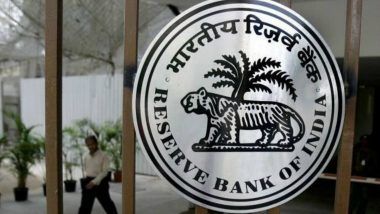New Delhi, April 1: The Reserve Bank of India (RBI) which is India's central banking institution celebrated its 83rd Foundation Day on April 1, 2018. RBI, which controls the monetary policy of India commenced its operations on 1 April 1935 in accordance with the Reserve Bank of India Act, 1934.
Following India's independence on 15 August 1947, the RBI was nationalised on 1 January 1949. To recall, the Reserve Bank of India was founded on 1 April 1935 to respond to economic troubles after the First World War. The Bank was conceptualized as per the guidelines, working style and outlook presented by B. R. Ambedkar in his book titled “The Problem of the Rupee – Its origin and its solution” and presented to the Hilton Young Commission.
The Preamble of the Reserve Bank of India describes the basic functions of the Reserve Bank as:
"to regulate the issue of Bank notes and keeping of reserves with a view to securing monetary stability in India and generally to operate the currency and credit system of the country to its advantage; to have a modern monetary policy framework to meet the challenge of an increasingly complex economy, to maintain price stability while keeping in mind the objective of growth."
Here are some salient features about the Reserve Bank of India (RBI):
- The RBI plays an important part in the Development Strategy of the Government of India. It is a member bank of the Asian Clearing Union.
- RBI was conceptualized as per the guidelines, working style and outlook presented by B. R. Ambedkar in his book titled “The Problem of the Rupee – Its origin and its solution” and presented to the Hilton Young Commission.
- Logo of RBI has a tiger and a palm tree. It was inspired by East India Company’s Double Mohur which had a lion instead of tiger. Financial Year of RBI is 1st July to 30th June.
- The general superintendence and direction of the RBI is entrusted with the 21-member Central Board of Directors: the Governor, 4 Deputy Governors, 2 Finance Ministry representatives, 10 government-nominated directors to represent important elements of India's economy, and 4 directors to represent local boards headquartered at Mumbai, Kolkata, Chennai and New Delhi.
- The establishment of RBI was recommended by Hilton Young Commission to the then British Government.
- RBI functions in accordance with provisions laid out in Reserve Bank of India Act, 1934.
- Although RBI was established as a private entity, it was nationalised from 1st January 1949 by Government of India through ‘Transfer of Public Ownership Act, 1948’. Initially, RBI’s headquarters was in Calcutta. It was moved to Mumbai in the year 1937.
Urjit R. Patel is an Indian economist, is currently serving as 24th Governor of Reserve Bank of India since September 2016. Prior to him, Raghuram Rajan was the Governor of the Central bank. It must be noted that Osborne Smith was the first Governor of RBI, whereas Mr C D Deshmukh was the first Indian Governor of RBI. Urjit Patel assumed office on 4th September 2016. Demonetisation of Rs. 500 and Rs.1000 denomination notes have been the most significant event during his tenure so far.
West Bengal Chief Minister Mamata Banerjee on Sunday wished all employees of Reserve Bank of India (RBI) on its foundation day. “Reserve Bank of India was established on this day. Wishing all employees of @RBI on this special day,” Banerjee tweeted.
(The above story first appeared on LatestLY on Apr 01, 2018 11:59 PM IST. For more news and updates on politics, world, sports, entertainment and lifestyle, log on to our website latestly.com).













 Quickly
Quickly



















